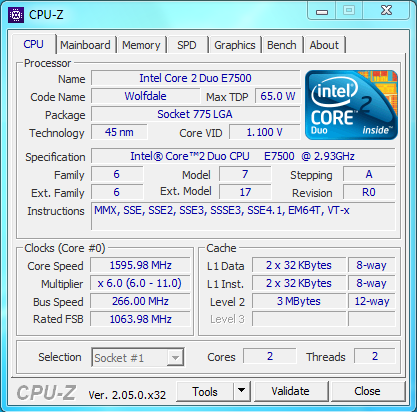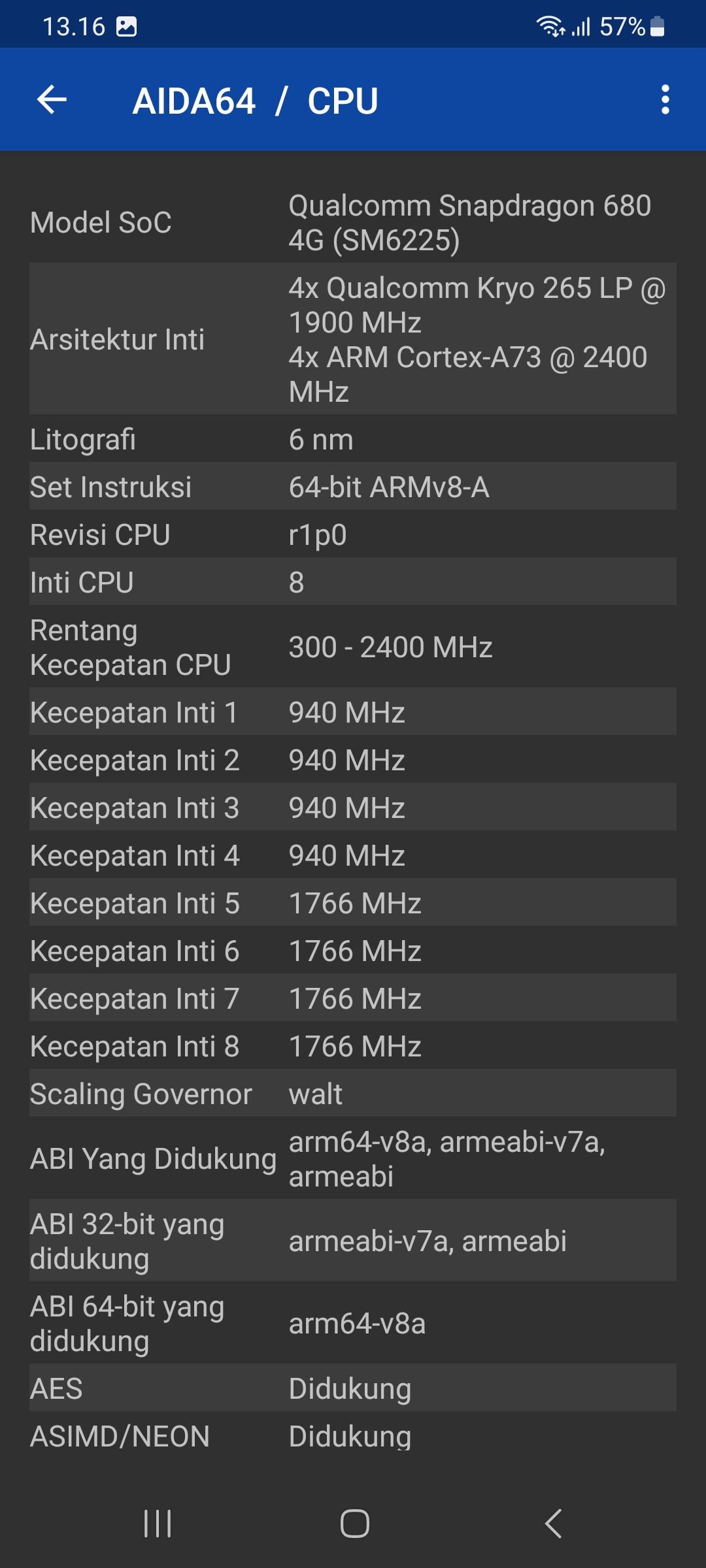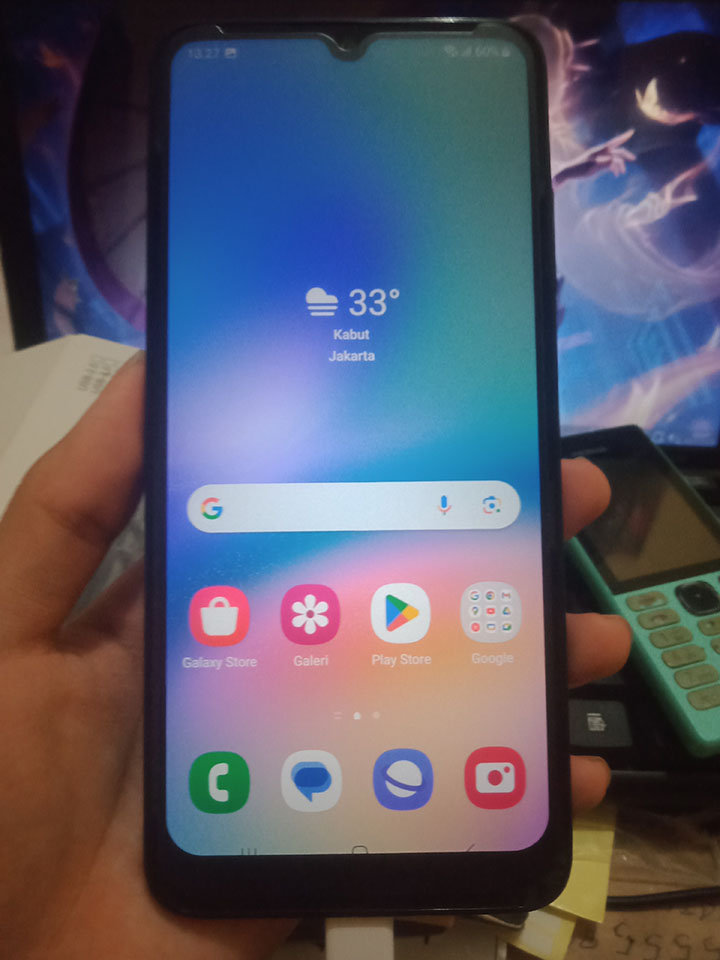Comparing: Intel Core 2 Duo E7500 vs Qualcomm SM6225 Snapdragon 680 4G
In this comparison, we analyze two Processors: Intel Core 2 Duo E7500 and Qualcomm SM6225 Snapdragon 680 4G, using synthetic benchmark tests to evaluate their overall performance. This side-by-side comparison helps users understand which hardware delivers better value, speed, and efficiency based on standardized testing. Whether you're building a new system or upgrading an existing one, this benchmark-driven evaluation offers valuable insights to guide your decision.

Intel Core 2 Duo E7500
| Type: | Processors |
|---|---|
| Brand: | Intel |
| Model: | Core 2 Duo E7500 |

Qualcomm SM6225 Snapdragon 680 4G
| Type: | Processors |
|---|---|
| Brand: | Qualcomm |
| Model: | Snapdragon 680 4G |
Specification Comparison Table
This specification comparison presents technical details of several devices or components to help you understand the key differences between each option. Use this table as a reference to determine which device best suits your needs.
| Specification | Intel Core 2 Duo E7500 | Qualcomm SM6225 Snapdragon 680 4G |
|---|---|---|
| Architecture | x86 | ARM |
| Technology | 45 nm | 6 nm |
| Clock | 2.93 GHz - - | 1.8 GHz - 2.4 GHz |
| Core/Thread | 2 / 2 | 8 / 8 |
| Segmen | Desktop | Mobile |
Submission Comparison Table
This submission comparison table displays the number and details of benchmark data submissions from various devices or components. This information helps you understand the performance based on the benchmarks that have been tested, as well as providing an overview of the consistency and popularity of the available benchmark results.
| No. | Benchmark Software | Intel Core 2 Duo E7500 | Qualcomm SM6225 Snapdragon 680 4G |
|---|---|---|---|
| 1 | Geekbench3 - Multi Core |
2862 points |
8267 points |
| 2 | Geekbench3 - Single Core |
1558 points |
2027 points |
Submission Comparison Chart
This chart visualizes the benchmark scores comparison between two hardware devices based on submitted data.
Media Gallery
A collection of photos of tested hardware. These images can help you identify the physical form, model, and variant of the hardware in question. These photos are from our own documentation, and if they are not available we may not be able to document them.
About Hardware Intel Core 2 Duo E7500
The Intel Core 2 Duo E7500 is a desktop processor released in 2009, based on the Wolfdale architecture, which is part of Intel’s Core 2 Duo family. It features 2 cores and 2 threads, running at a clock speed of 2.93 GHz, and operates with a 1066 MHz Front Side Bus (FSB).
Manufactured using 45nm process technology, the E7500 has a TDP of 65W, which was considered energy-efficient for its time. However, this processor does not support Hyper-Threading or Turbo Boost, meaning its performance is limited to strictly single-threaded and basic dual-threaded applications.
In terms of modern computing standards, the Core 2 Duo E7500 is outdated and performs well below current entry-level processors. Despite this, it can still be useful in legacy systems for light workloads such as basic web browsing, office documents, and 480p–720p video playback, especially when paired with a lightweight operating system.
Thursday, 09 March 2023 02:31:57 | Update: 1 month ago
About Hardware Qualcomm SM6225 Snapdragon 680 4G
Qualcomm SM6225 Snapdragon 680 4G is a mid-range processor designed to deliver efficient performance with low power consumption. Built using a 6nm fabrication process, this chipset is able to provide an ideal blend of speed, power efficiency, and stability, which is perfect for smartphones and tablets in the entry-level to mid-range class.
Snapdragon 680 carries an octa-core CPU configuration, consisting of 4x Kryo 265 Gold (Cortex-A73 based) and 4x Kryo 265 Silver (Cortex-A53 based), providing a smooth multitasking experience and good enough performance for light to medium gaming. In terms of graphics, the chipset is powered by the Adreno 610 GPU, which is capable of handling multimedia needs such as high-resolution videos and casual games quite well.
In terms of connectivity, the Snapdragon 680 supports 4G LTE networks and includes Qualcomm AI Engine, which helps improve camera processing, voice recognition, as well as power management efficiency. Not to forget, the presence of Qualcomm Spectra 346 Triple ISP enables better image processing, including camera performance in low-light conditions and multi-camera configurations.
The test was conducted using a Samsung Galaxy A05s device, powered by Snapdragon 680, with a configuration of 6GB RAM, 128GB UFS storage, and Android 13 operating system with One UI 5.1. The test was conducted under new device conditions, using default settings, and an ambient room temperature of 30°C based on the DHT11 sensor.
The results of CPU performance testing on the Snapdragon 680 chipset show quite good numbers in the mid-range. Through AnTuTu Benchmark version 10, the CPU score obtained reached 105,662 points, while in the previous version, AnTuTu Benchmark v9, the score was recorded at 82,391 points. Testing with Geekbench 6 also gave a balanced performance picture, with 415 points for single-core and 1,424 points for multi-core. These scores show that the Snapdragon 680 is capable of providing a smooth usage experience for everyday needs such as multitasking, browsing, and running popular apps efficiently.
These results show that the Snapdragon 680 is a solid choice for users who want stable and efficient performance on a mid-range Android device, whether for daily use, content consumption, or light gaming.
Device Test:
Device: Samsung A05s
Specs: Snapdragon 680, 6GB RAM, 128GB UFS, Android 13
Room Temperature: 30 celcius based on DHT11 Sensors
* Testing was carried out when the device was in new condition, with the latest operating system update, One UI 5.1, default settings
Thursday, 11 January 2024 23:04:13 | Update: 1 month ago

